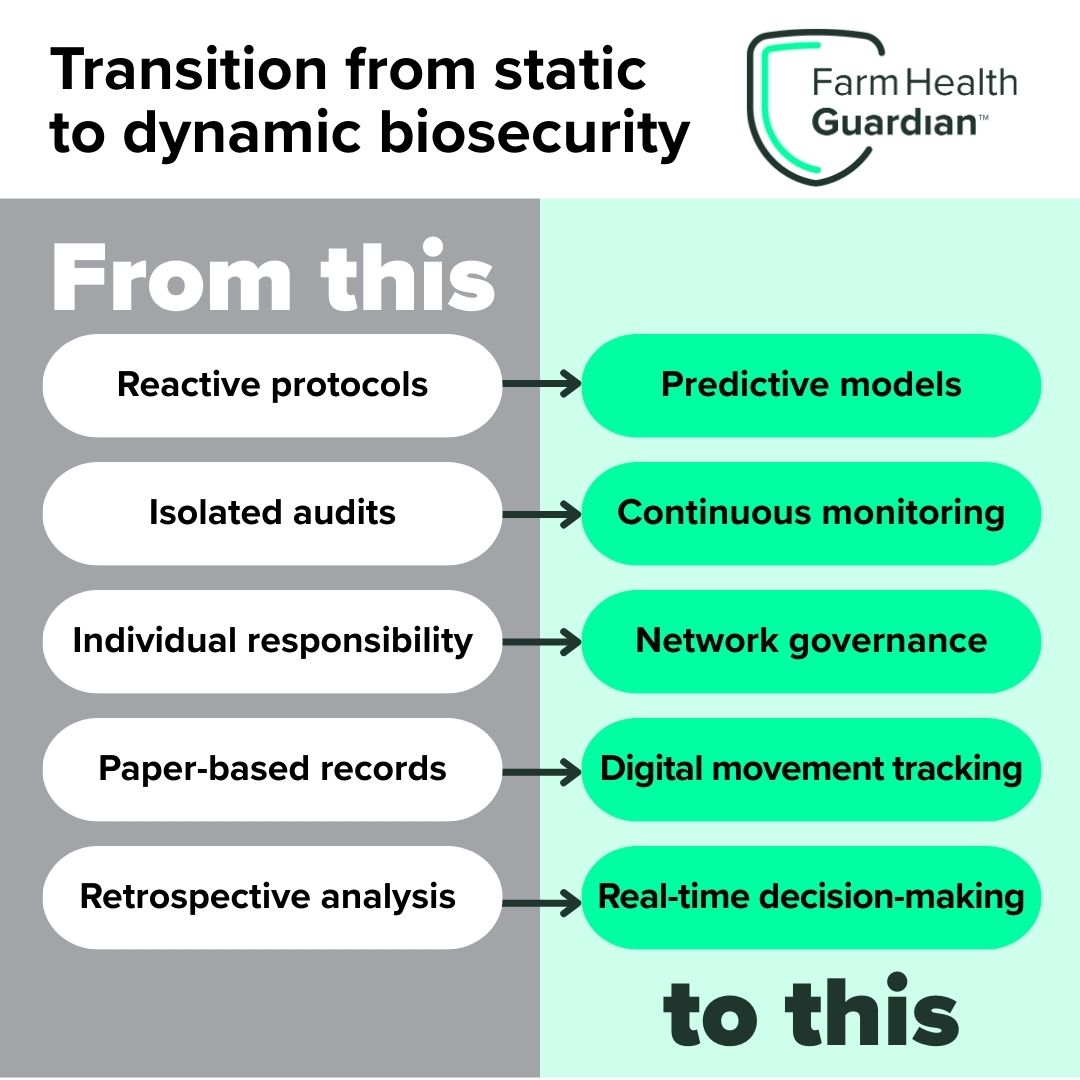
Rob Hannam
CEO, Farm Health Guardian
As a Farm Health Guardian partner and CEO, Rob is committed to providing technology solutions to create a healthy and sustainable agri-food industry. Rob has proven experience in building and marketing innovative businesses like Farm Health Guardian. He is also President of Synthesis Agri-Food Network where he leads a team of consulting and communications professionals to push the boundaries of agri-food leadership and innovation.
Did you know that after feed, disease is the second largest cost in livestock production? While we may not think of disease when we calculate cost of production, we shouldn’t overlook its potential impact.
The underestimated cost of disease
Anthony Novero, Chief Technology Officer of Farm Health Guardian, says that we vastly underestimate how much disease costs. Significant losses due to mortality, depopulation and repopulation, and additional costs of cleaning and disinfection result in millions of dollars of lost revenue for large sow units. If a 5,000-sow unit is impacted by PRRS (porcine reproductive and respiratory syndrome) for example, it can mean a loss several million dollars in the profitability of the whole system.
In fact, the estimated losses due to PRRS are as high as $1.2 billion per year in the US and $184 million in Canada.
Iowa State University conducted a study led by Dr. John Patience, comparing the economics of pig production under different health conditions. The case study monitored pigs of different health status across three 1,000 head barns. Three different health challenges were maintained throughout the course of the experiment (low, medium and high). All three barns tested positive for PRRS, and the medium and high health challenged barns also tested positive for influenza A virus.
Performance, mortality, growth and economics were compared and scaled up to a 2,400 head barn. Pigs weighed 29 lb at the start of the trial and were grown to market weight at 285 lb.
Table 1: Comparison of low vs high health challenged barns
| Low | High | |
| Mortality | 3.3% | 19.9% |
| Pigs to market | >89% | 71% |
| Average daily gain | 1.9 lb/day | 1.6 lb/day |
| Days to market (DTM) | 133 | 148 |
| Gross revenue to 285 lb | $306,000 | $246,000 |
| Profit per pig | $13.50 | $-5.42 |
| Gross revenue (133 DTM) | $307,000 | $229,000 |
Over the course of the study, mortality was 3.3% in the low health challenged barn, versus 19.9% for the high health challenged pigs. Days to market was a full two weeks extra for the high health challenged pigs vs the low health challenged pigs.
Looking at revenue per pig, it was $13.50 for the low health challenged barn, versus a loss of $5.42 for the high health challenged barn. That’s a $19.25 per pig difference.
Looking at revenue per pig, it was $13.50 for the low health challenged barn, versus a loss of $5.42 for the high health challenged barn. That’s a $19.25 per pig difference.
The costs of disease are not just financial but emotional too. Novero emphasizes, “No one wants to work around sick pigs. When you have thousands of animals in a barn, there are going to be losses. When disease hits it becomes emotionally draining, not just physically demanding.”
Making biosecurity stick
Dr. Patrick Hoffman, Swine Technical Advisor, in a recent article, says that “Great biosecurity plans are layered so that if one process fails, another will catch it.”
This means that if one biosecurity practice is missed or doesn’t work, another safeguard is in place that reduces the risk of introducing a disease like PRRS.
But it takes more than a prescriptive checklist to ensure a comprehensive biosecurity plan is properly executed every day.
The paper Controlling pathogen movements throughout the entire value chain discusses that to be effective, biosecurity must move beyond a prescriptive checklist toward a dynamic process of continuous threat recognition, adapted to specific contexts and evolving circumstances.
It reads, “To embed ongoing compliance the system needs to routinely inform all actors about their individual and collective compliance,” This underscores the need for not only safeguards but also for dynamic feedback to be part of a comprehensive, effective biosecurity plan.

So, what does this mean for preventing PRRS in pigs? Including digital technology like Farm Health Guardian in a farm biosecurity plan will result in a dynamic, responsive feedback system leading to greater awareness and improved compliance. Ultimately this will lead to healthier animals and a lower risk of spreading PRRS and other diseases.
For more information visit farmhealthguardian.com.



